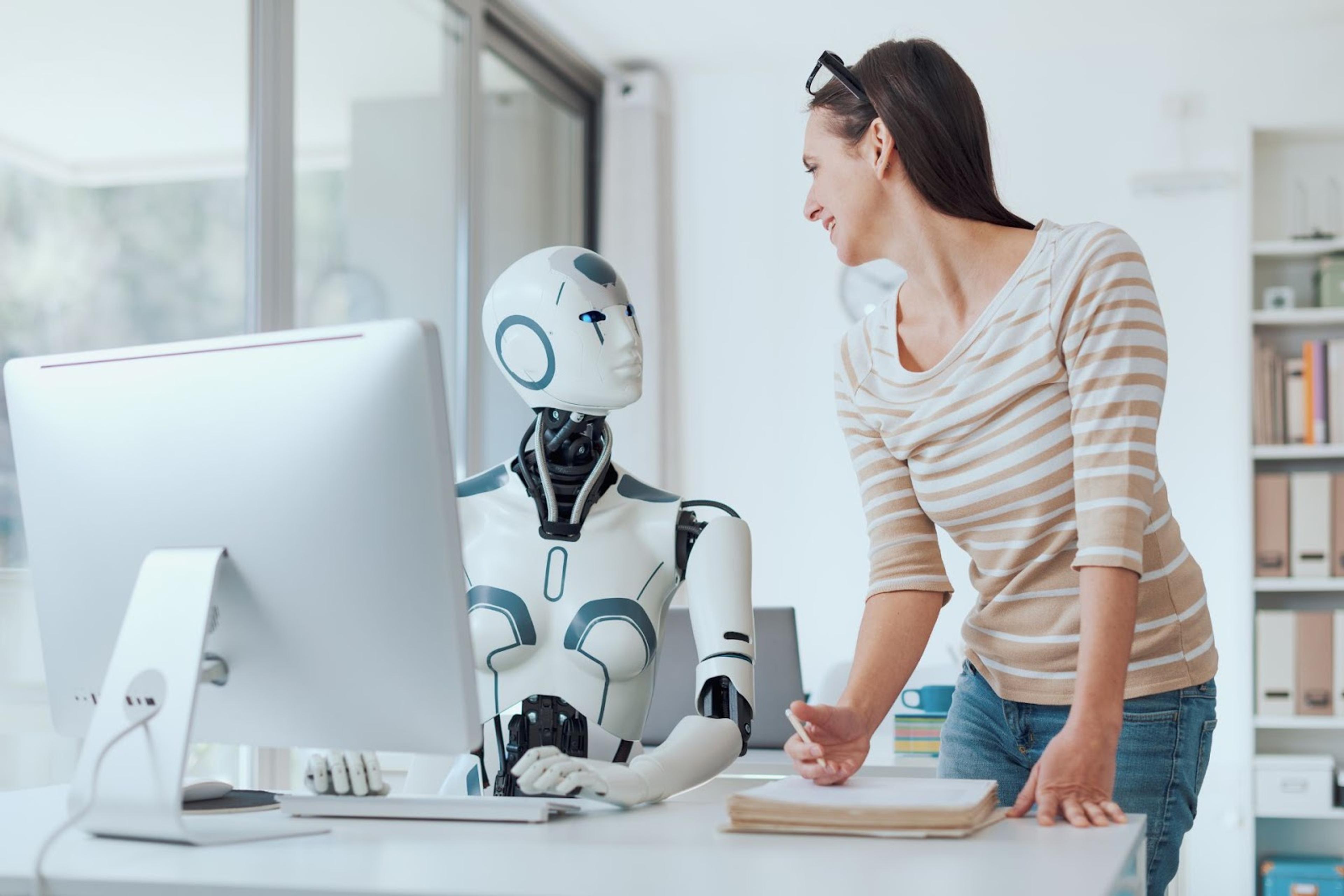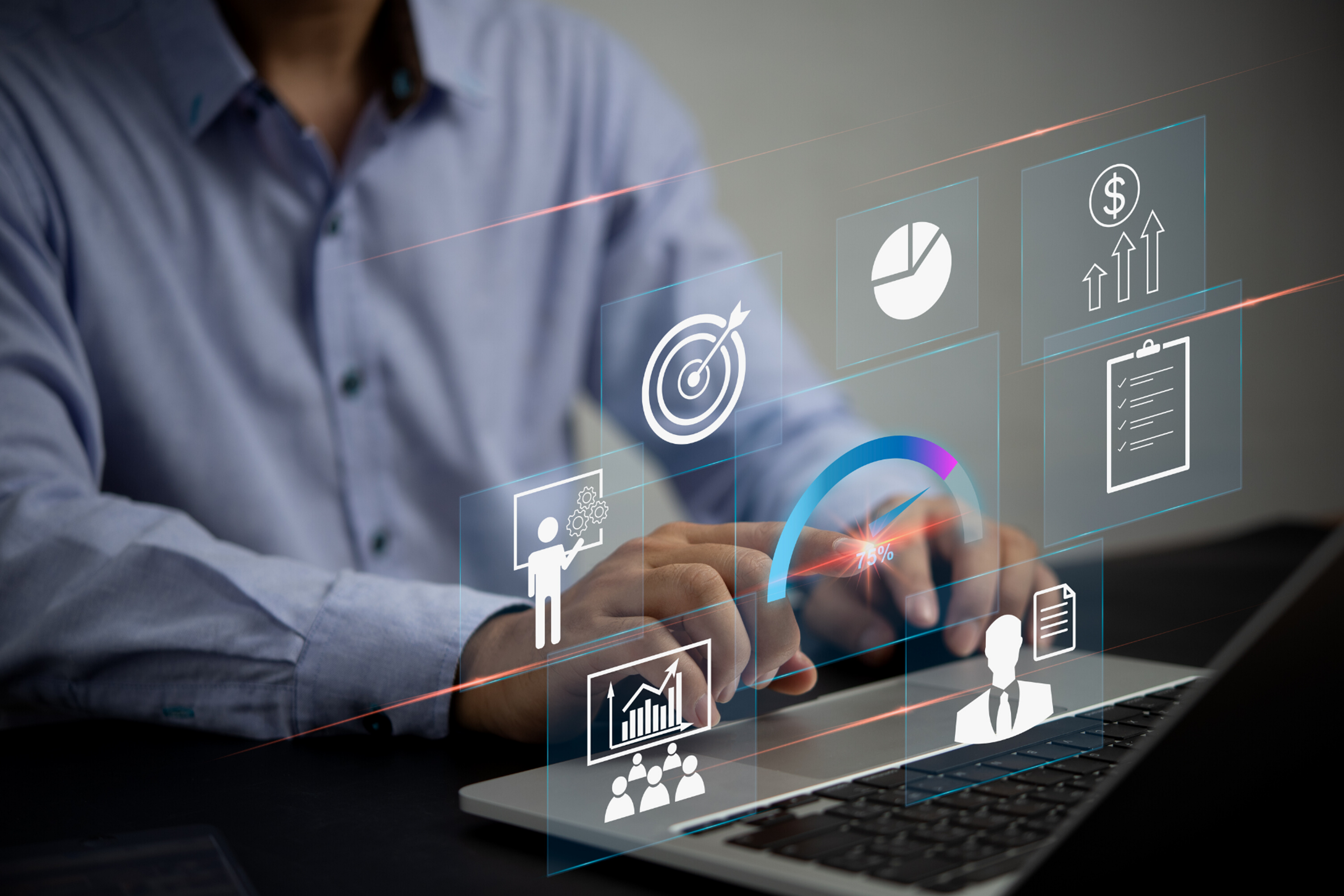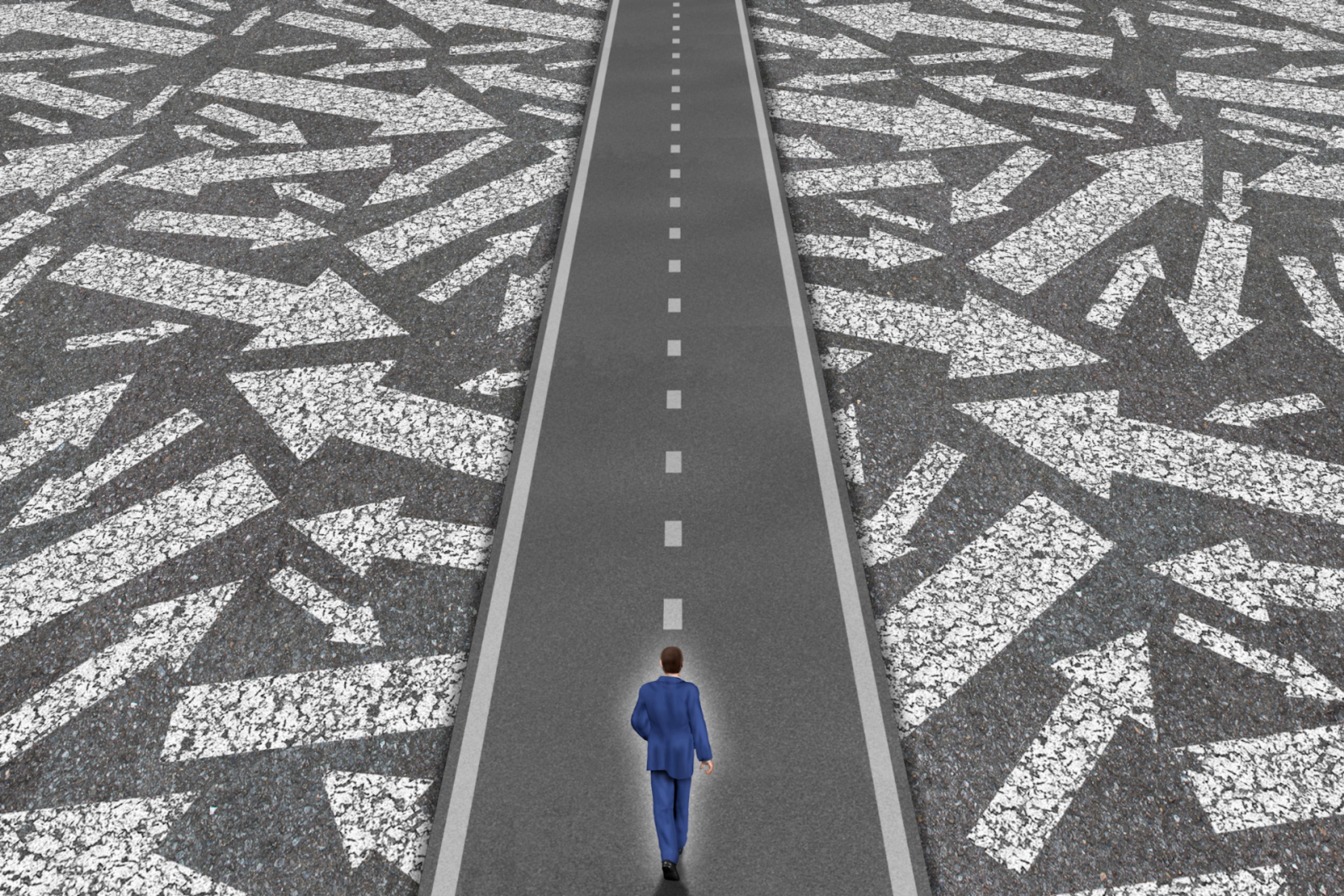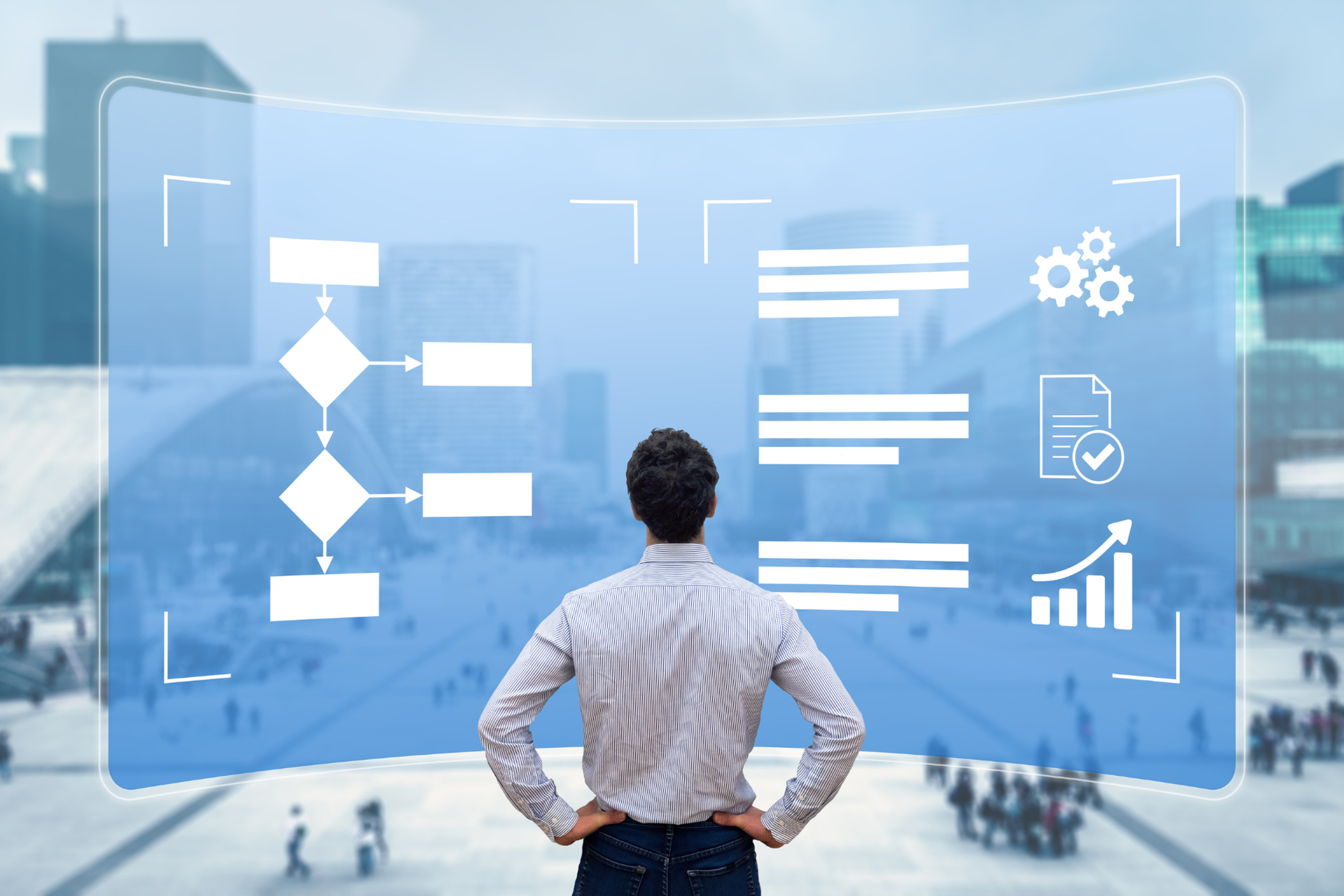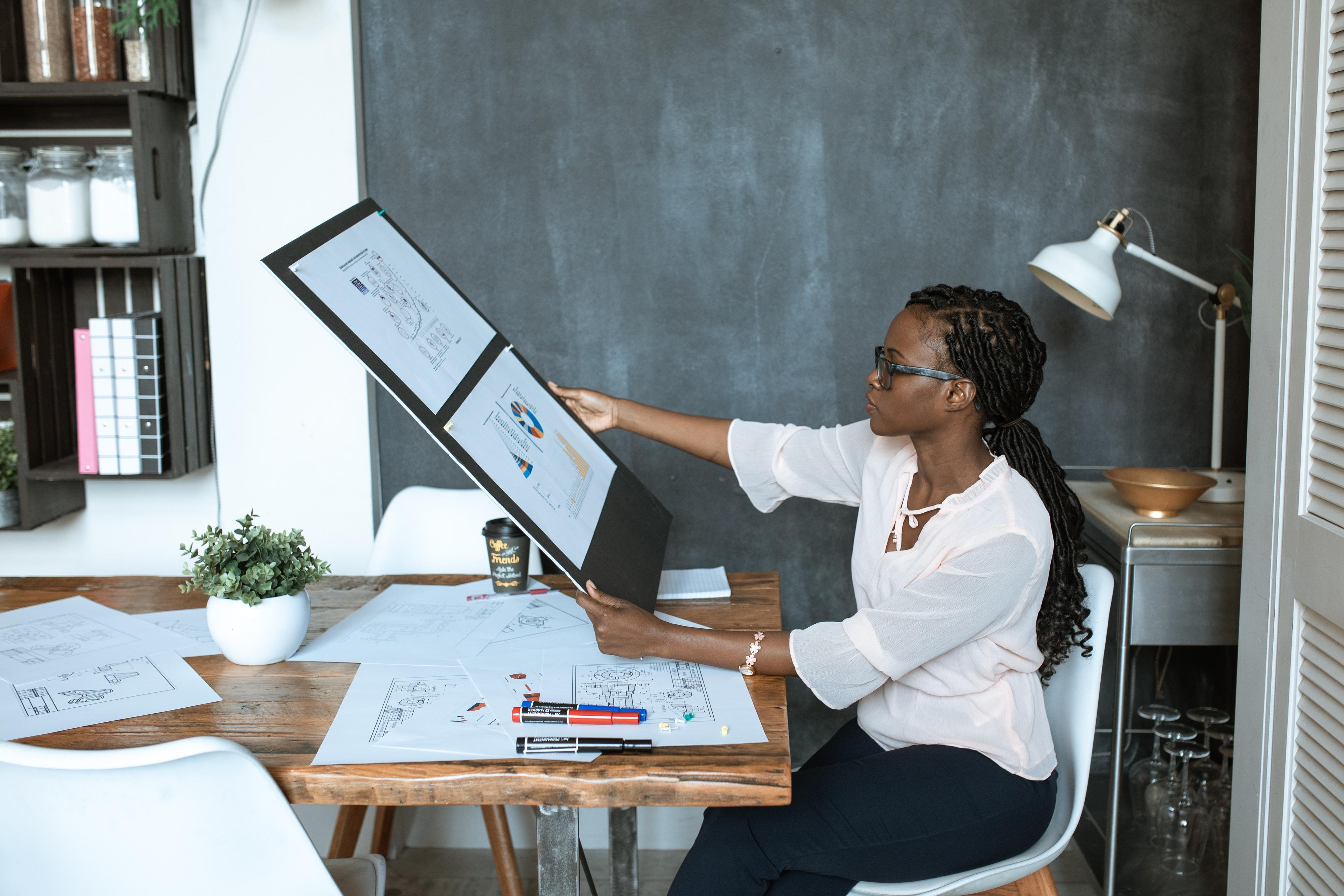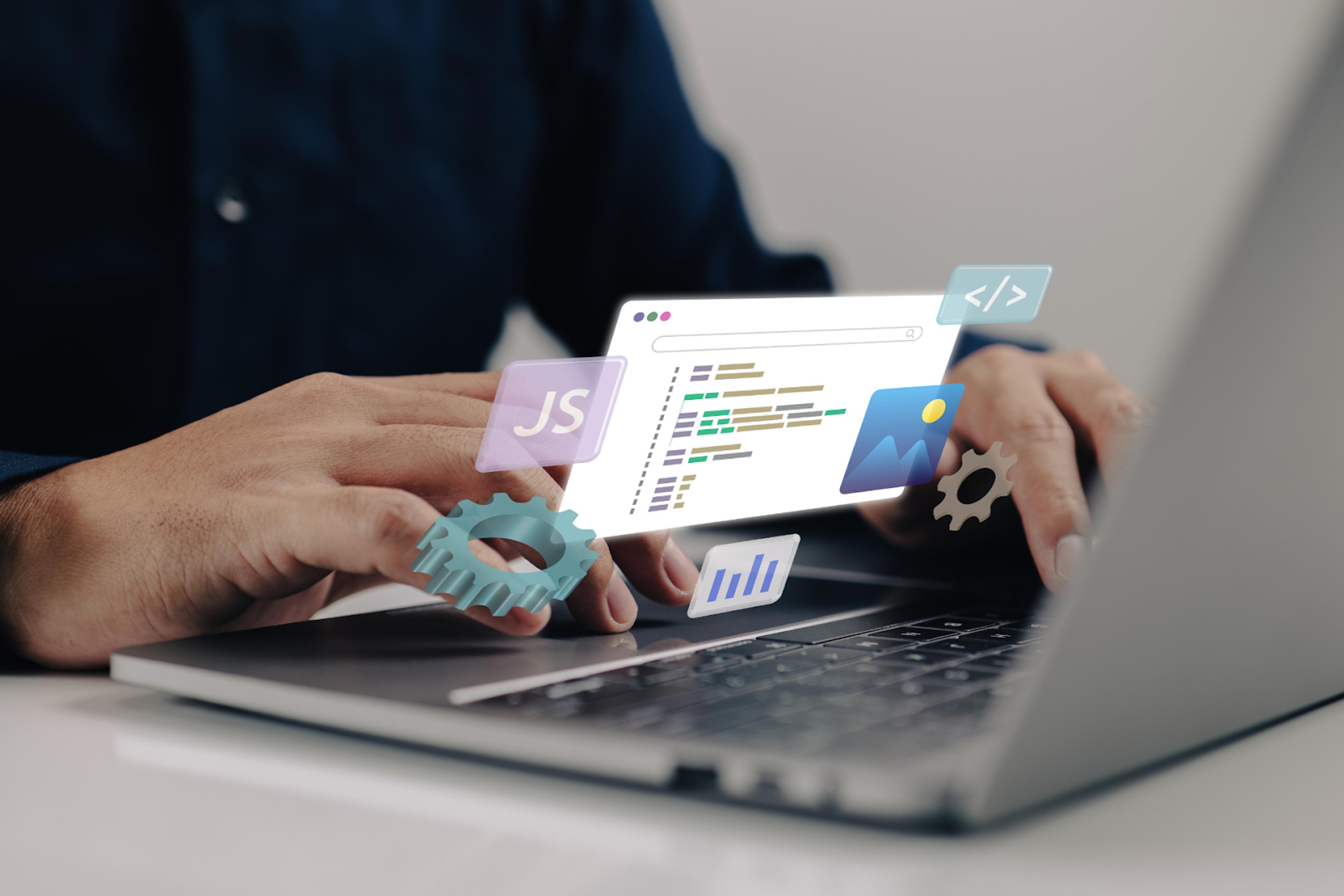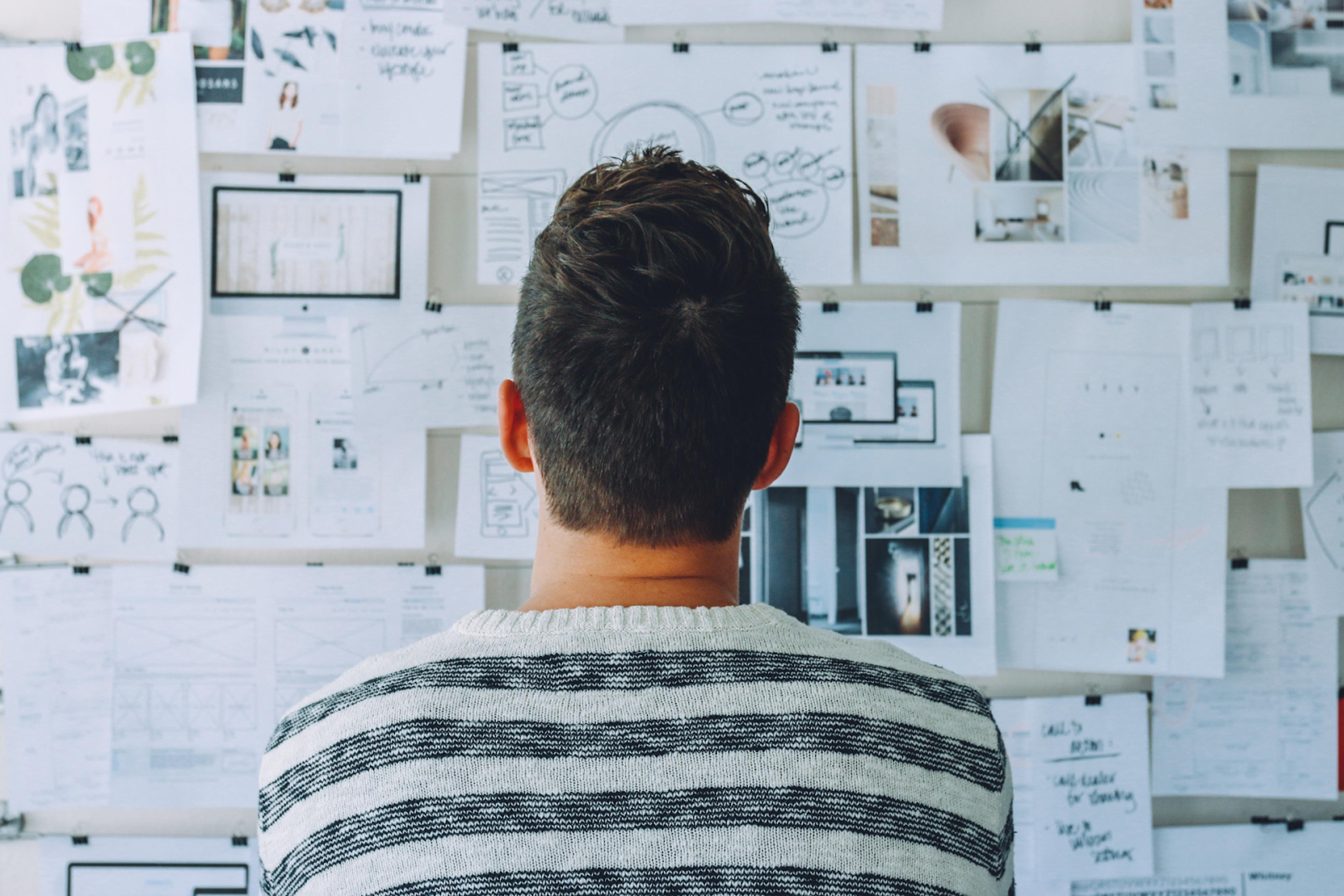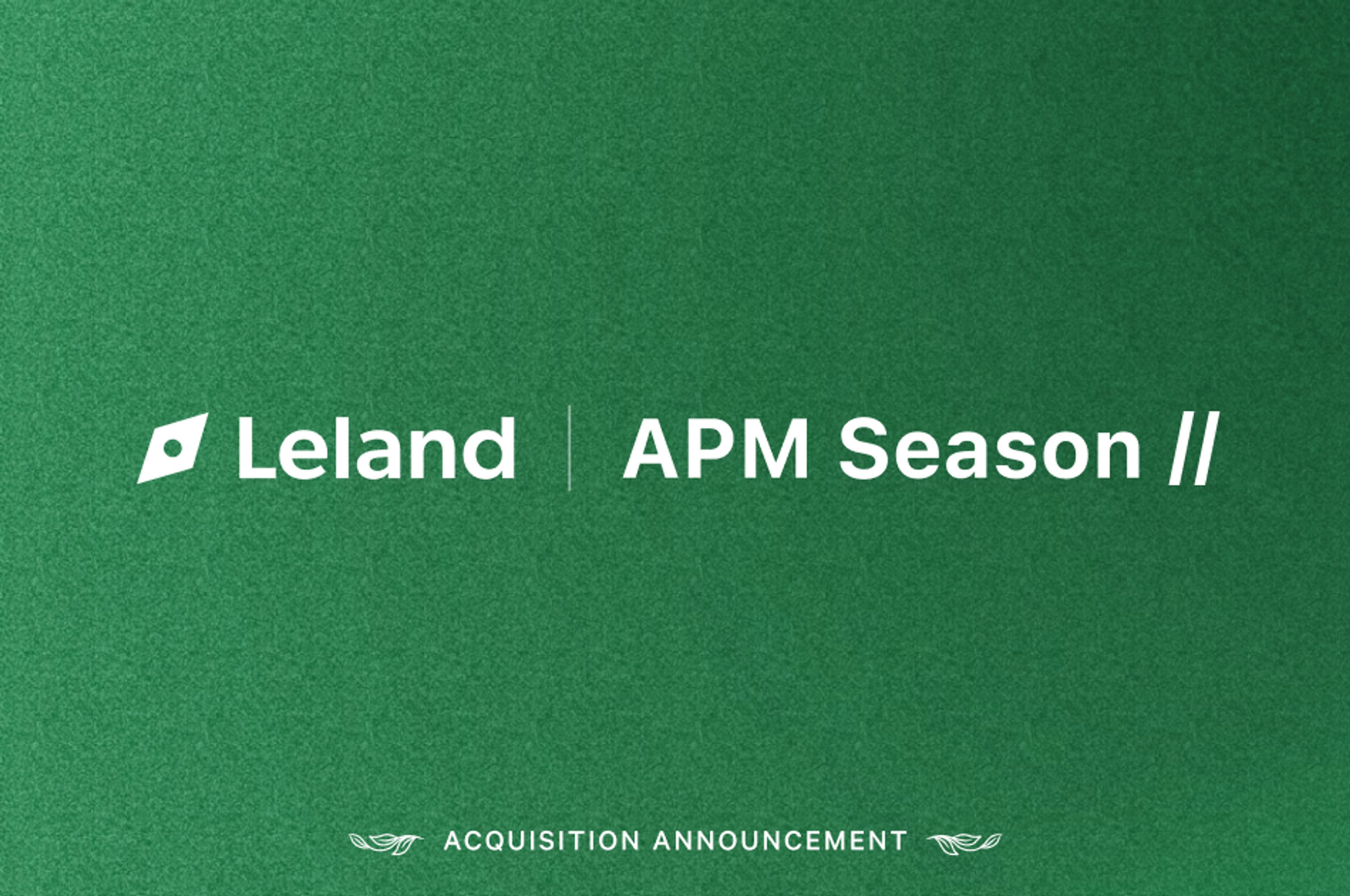The Product Design Interview: Ultimate Guide (With Common Questions)
Prepare for your product design interview with our ultimate guide. Get tips, insights, and common questions to boost your confidence and succeed.
Posted June 13, 2025

Table of Contents
Free Event

Featuring Christina P.
Skills to Be a Full-Stack PM
Starting Wednesday, September 10
4:00 PM UTC · 30 minutes

Featuring Christina P.
The product design interview can feel daunting, but with the right preparation, it’s an incredible opportunity to showcase your creativity, problem-solving skills, and passion for building great user experiences. Whether you're a seasoned designer or just starting out, this guide will walk you through everything you need to know to succeed. We’ll break down common questions, proven frameworks, and strategies that top product designers use to impress interviewers. Let’s get started!
What is Product Design?
Product design is the strategic process of blending user needs and business objectives to create innovative, functional products. Product designers focus on enhancing user experience while ensuring long-term business value through sustainable, impactful design solutions.
The Product Design Interview
The product design interview is a critical step in the hiring process where companies assess your ability to think strategically and creatively to solve real-world design challenges. It typically involves a mix of questions about your design process, problem-solving skills, and past projects, along with practical exercises like case studies or whiteboard challenges. Interviewers want to see how you approach user preferences and needs, balance business objectives, and deliver impactful, user-centered solutions. It’s not just about your technical skills -- it’s also a chance to demonstrate how you collaborate, communicate, and iterate on ideas to create thoughtful, innovative designs.
Stepping into a product design interview can be a challenging experience. It's a unique blend of showcasing your technical skills, demonstrating your design thinking, and proving your ability to collaborate effectively.
Note that the product design interview is first and foremost for product designers. However, sometimes more general product managers will also get a product design interview as many of the skills overlap with what a PM does on a day-to-day basis.
Types of Questions
In a product design interview, you'll encounter a variety of question types aimed at assessing different aspects of your skills and experience. These may include:
- Portfolio Critique: Be prepared to discuss a previous project in depth. You might be asked about the project you're most proud of, or the one that gave you the most trouble.
- Research and Metrics: Expect questions about user research techniques, how you use data to guide design decisions, and your experience with usability testing (including A/B).
- Tools and Development: Interviewers may ask about the design tools you use, how you solve design problems without a computer, or your experience with prototyping tools.
- Design Challenges: These are hands-on exercises where you might be asked to design a UI, wireframe an app layout, or even tackle unconventional problems like designing an elevator for a 1000-floor building.
- App/Product Critique: You may be asked to analyze existing apps or products, discussing what you like about them or how you'd improve them.
- Situational Questions: These assess how you handle real-world scenarios, such as missing deadlines or dealing with pushback on your designs.
Key Skills
Throughout this interview process, interviewers are evaluating you holistically, but also looking for these skills:
- Craft Skills: Your knowledge of interaction design, visual design, tools, platforms, research, and psychology is under scrutiny. You’ll likely need to have proficiency in common tools like Figma, Adobe XD, Adobe Photoshop/Illustrator, Framer, and Sketch.
- Collaboration Skills: Beyond your technical abilities, interviewers want to see how well you work with others, show progress, and get things done. Both product managers and product designers are required to work with cross-functional teams.
- Critical Thinking: Your ability to think about a new or potential product critically is crucial. This includes identifying target users, understanding their needs, and figuring out how the product can satisfy those needs.
- Problem-Solving: Many questions are designed to gauge how you approach and solve complex design problems.
- Communication: Your ability to articulate your design decisions and thought processes clearly is essential. Can you take constructive criticism and rework designs? Can you highlight the most important takeaways and features? Can you communicate why you made certain decisions?
- Data-Mindedness: Demonstrating that you can use both qualitative and quantitative data to inform your decisions is highly valued.
- Creativity: While obvious answers are okay, showing that you can think broadly and come up with innovative ideas is important.
- Prioritization: A core part of the product design role is prioritizing tasks and features. Using user research, product sense, usability tests, and other tools, can you make a successful case for what the product roadmap should look like? Demonstrating this skill during your interview can set you apart.
In many cases, the thinking behind your work is more important than the actual skills you can show today. Interviewers are looking for designers who can not only create beautiful interfaces but also think critically about user needs and business goals.
Read: What is Product Management?
20 Product Design Interview Questions with Example Answers
Preparing for a product design interview can be challenging, but with the right approach, you can showcase your skills and land your dream job. Here are 20 common product design interview questions with sample answers:
1. How would you define yourself as a designer?
Example Answer: "I define myself as a product designer who thrives on solving complex problems through user-centered design. I’m passionate about creating intuitive, impactful products that balance user needs with business objectives, while keeping technical constraints in mind. For example, in my last project, I led a redesign that boosted user retention by 20% by streamlining the overall user experience based on extensive user feedback and testing. My goal is always to build products that feel seamless and meaningful to users while driving measurable business outcomes."
2. Describe the project you're most proud of. Why?
Example Answer: "I’m most proud of a mobile app redesign project where we faced tight deadlines but managed to significantly improve user engagement. Through usability testing and data analysis, I identified key pain points and worked with cross-functional teams to implement a more intuitive interface. The result? A 30% increase in daily active users and a 15% higher user satisfaction score post-launch. This project not only showcased my ability to collaborate under pressure but also reinforced my commitment to user-driven design."
3. What design tools do you use to create and communicate your ideas?
Example Answer: "I use Figma, Sketch, and Adobe XD to create interactive prototypes that allow stakeholders to experience the design before development. I lean heavily on Figma’s collaborative features to gather real-time feedback from teams. Miro is my go-to for brainstorming and mapping user journeys, while InVision helps me share prototypes and receive detailed feedback, ensuring alignment across teams before moving forward."
4. How do you ensure your designs meet customers' demands?
Example Answer: "I ensure my designs meet customer needs by incorporating user testing and feedback throughout the design process. For instance, in my last project, we ran A/B tests on two versions of a new feature and found that one version improved user task completion by 25%. I then conducted user interviews to dig deeper into the feedback and iterated the design accordingly. By consistently validating design choices with real users, I ensure the final product is both user-centric and impactful."
5. What’s your experience with user research or usability testing?
Example Answer: "In a recent project, I conducted usability testing by creating user flows and observing how participants interacted with our prototype. We used think-aloud protocols to capture real-time user feedback, which uncovered two major usability issues. Based on these insights, I led design iterations that ultimately reduced user drop-off by 18% during the onboarding process. This hands-on research was key to creating a product that met user needs and led to a successful launch."
6. How do you approach designing for mass production?
Example Answer: "When designing products for mass production, I consider factors like scalability and technical constraints. I work closely with engineers to ensure that my designs can be manufactured efficiently while maintaining quality and aesthetics. For instance, I recently designed a product where we optimized the materials to reduce manufacturing costs by 15%, ensuring the product remained functional and visually appealing while still cost-effective for large-scale production."
7. What’s your design process for digital vs. physical products?
Example Answer: "For digital products, I focus on interaction patterns, responsiveness, and user flows across different devices. For physical products, I prioritize ergonomics, materials, and the tactile experience. Both processes involve extensive user testing, but with digital products, the emphasis is on navigation and screen size optimization, while for physical products, it's about ensuring ease of use and durability."
8. How do you handle situations where you're getting negative feedback on your design?
Example Answer: "I view negative feedback as an opportunity for improvement. When I receive constructive feedback, I first listen carefully to fully understand the concern. I then collaborate with every team member to discuss possible solutions and make necessary adjustments. My goal is to turn criticism into actionable changes that enhance the product and better serve the user."
9. What analytics tools and KPIs do you use to evaluate product designs?
Example Answer: "I use tools like Google Analytics and Mixpanel to track key performance indicators such as user engagement, conversion rates, and task completion times. These metrics provide both quantitative and qualitative data that help me assess how well users are interacting with the product, allowing for data-driven design iterations."
10. How do you make websites and platforms accessible to all user groups?
Example Answer: "I adhere to the Web Content Accessibility Guidelines (WCAG) to ensure designs are accessible. This includes using high-contrast colors, ensuring screen reader compatibility, and designing keyboard-friendly navigation. I also conduct user testing with individuals who have disabilities to ensure the product is truly usable for a diverse range of users."
11. What does "design thinking" mean to you?
Example Answer: "Design thinking is a user-centered approach to problem-solving that involves empathizing with the user, defining their needs, brainstorming potential solutions, prototyping, and testing. It encourages iterative design, constantly learning from users, and refining the product until it truly solves their problems."
12. How do you balance aesthetics with functionality in your designs?
Example Answer: "I believe aesthetics and functionality must work together seamlessly. My approach is to create visually appealing designs that also solve real user problems. I rely on user testing and performance metrics to ensure that the designs not only look good but are also intuitive and easy to use."
13. Describe a time when you had to negotiate your way to the ideal UX solution.
Example Answer: "During a project with tight deadlines, developers flagged several proposed features as too complex to implement within the timeline. I worked with them to prioritize the most impactful features and simplify others without compromising on user experience. This negotiation resulted in a UX solution that met both customer needs and technical barriers, allowing us to launch the product on time."
14. How do you stay updated on the latest trends in product design?
Example Answer: "I follow industry blogs, attend conferences like UX Week, and actively participate in design communities like Dribbble and Behance. These platforms not only help me stay updated on trends but also allow me to engage with other designers and gain insights into emerging best practices."
15. What’s your approach to designing for different platforms (e.g., mobile, web, desktop)?
Example Answer: "I adapt designs for each platform by considering the unique interactions of each, such as touchscreens for mobile or mouse navigation for desktops. However, I strive to maintain a consistent user experience across all platforms to ensure users can seamlessly transition from one to another."
16. How do you prioritize features when designing a new product?
Example Answer: "I prioritize features by evaluating their potential impact on both users and business goals. I use user feedback, data analytics, and business objectives to guide my decisions. I focus on features that will deliver the most value to the user while aligning with the company's long-term goals."
17. Describe your experience with creating design systems.
Example Answer: "I've developed design systems that ensure consistency across products by defining reusable components, design principles, and patterns. These systems streamline the design process and ensure that all teams are working within the same visual and functional framework, providing a unified user experience across platforms."
18. How do you collaborate with developers to ensure your designs are implemented correctly?
Example Answer: "I collaborate closely with developers by providing detailed design specifications, user flows, and interactive prototypes. Tools like Zeplin and Figma are essential for clear handoff, and I schedule regular check-ins to address any implementation challenges and ensure the design vision is fully realized."
19. What’s your approach to designing for different user personas?
Example Answer: "I create detailed user personas based on user research and behavioral data. By understanding the unique needs, goals, and pain points of different personas, I tailor my designs to address these specific requirements, ensuring the product serves a diverse user base effectively."
20. How do you measure the success of your designs?
Example Answer: "I measure the success of my designs through metrics such as user satisfaction, engagement rates, and business KPIs like conversion rates. I also rely on A/B testing and user feedback to continually iterate and refine the design, ensuring that it meets both user needs and business goals."
Related topic: The 50 Most Common Product Manager Interview Questions (With Sample Answers)
Product Design Framework
As a product manager, having a solid product design and development process is crucial for building successful products. With numerous frameworks available, choosing the right one can be daunting. Let's explore some popular product design frameworks to help you create a custom process that fits your product development needs.
Minimum Viable Product (MVP)
An MVP is a product with only essential features, primarily built to collect customer feedback and data. It helps validate product ideas and offers guidance on iterating the design. MVPs can include:
- Landing pages
- Explainer videos
- Crowdfunding campaigns
- Marketing emails
- Single-feature products
- Prototypes
Double Diamond Design Process
Developed by the British Design Council, this process connects critical thinking to design principles. It includes four parts:
- Discover: Gather insights to understand target audience problems
- Define: Narrow down data into a clear problem definition
- Develop: Build prototypes and MVPs to explore solutions
- Deliver: Launch the final product while continuing to gather both negative and positive feedback
While originally linear, an updated version encourages teams to move between stages as needed.
HEART Framework
Google developed this framework to streamline the process of improving user experience (UX). HEART stands for:
- Happiness
- Engagement
- Adoption
- Retention
- Task success
Product managers look at the goals, signals, and metrics of each category. For example, an uptick in five-star reviews could signal progress toward a happiness objective of increasing user satisfaction.
CIRCLES Method
This method helps product managers test their understanding of design-oriented questions. It consists of seven steps:
- Comprehend the situation
- Identify the customer
- Report customer needs
- Cut through prioritization
- List solutions
- Evaluate trade-offs
- Summarize your recommendation
Choosing the Right Framework
When selecting a framework, consider your product maturity, what you want to learn, and how much validation you already have. Lean startup and design sprints can quickly validate new ideas, while jobs to be done and design thinking are better for exploration. Ultimately, you want an iterative process centered on customer needs. Adapt frameworks as you learn more and focus on determining which features matter most to delight your users.
5 Product Design Interview Tips to Follow
Preparing for job interviews can be challenging (especially if it’s for a product design position), but with the right approach, you can showcase your skills and land your dream job. Here are five essential tips to help you succeed:
1. Do Your Homework
Before the interview, research the organization and its approach to product design. This preparation not only helps you tailor your examples and answers but also demonstrates your genuine interest in the role. Understanding the company's products, design philosophy, and recent developments will give you an edge during the interview.
2. Prepare Your Portfolio
Your portfolio is a crucial tool for showcasing your work. Select your best examples and think about how they demonstrate your suitability for the role. Remember, the journey is equally important as the end result. Be prepared to discuss your design process, rationale, and your specific contributions to each project. Practice your portfolio walkthrough to ensure you can present it effectively within the given time frame.
3. Practice Answering Interview Questions
While you can't anticipate every question, it's beneficial to practice your approach to answering common product design interview questions. Provide examples wherever possible to illustrate your points, the more specific, the better! Consider questions about your design process, problem-solving skills, and collaboration experiences. Remember, interviewers are often looking for your ability to think critically about products - who the target users are, what needs they have, and how the product satisfies those needs.
4. Prepare Questions to Ask
An interview should be a two-way conversation. Come prepared with thoughtful questions about the role, the team, and the company's approach to product design. This shows your enthusiasm and helps you gather important information to assess if the role is right for you.
5. Showcase Your Thought Process
During portfolio reviews and design exercises, focus on demonstrating your thought process. Interviewers want to see how you approach problems and make design decisions. Frame your projects as compelling stories, highlighting the challenges you faced and how you overcame them. Don't be afraid to ask clarifying questions during these sessions! Curiosity often leads to better solutions.
The Bottom Line
Mastering the product design interview requires a blend of technical skills, creative thinking, and effective communication. By understanding the interview process, preparing for common questions, and leveraging key frameworks, designers can showcase their skills and make a lasting impression. This guide equips aspiring product designers with the tools to navigate the interview process confidently, from portfolio presentations to hands-on design challenges.
Remember, success in product design interviews goes beyond just technical skills. It's about demonstrating your ability to solve complex problems, collaborate with diverse teams, and create user-centered solutions. By following the tips outlined in this guide and staying true to your unique design perspective, you'll be well-prepared to tackle any product design interview and land your dream role in this exciting field.
Do well and good luck to your next job interview!
Read next:
- Associate Product Manager (APM) Resume Guide — With Examples
- How to Develop Product Sense as a Product Manager
- An Overview of the Different Roles in Product Management
- How to Become a Product Manager (For Every Career Stage)
FAQs
What is a product design interview?
- A product design interview evaluates a candidate's ability to think through the product design process, considering user preferences and needs, technical barriers, and business goals. It often involves conducting user research and presenting solutions based on real-world problems.
How to ace a product design interview?
- To excel, focus on understanding the problem, defining the users, and exploring possible solutions that align with business goals. Demonstrate your product designer growth mindset by showcasing your approach to balancing user needs and constraints.
What are the 4 C's of product design?
- The 4 C's (Context, Concept, Craft, and Communication) are key concepts in the product design process. They help a product designer frame the problem, develop ideas, and communicate them clearly, all while considering technical implications.
What is product design with examples?
- Product design involves creating solutions that solve user problems within specific technical constraints. For example, a product designer may develop a mobile app interface or redesign a physical product like a smart thermostat. Conducting user research and iterative prototyping are key parts of the process.
What steps should I take to excel in a product design interview?
- To excel in a product design interview, it's crucial to understand the interview format, thoroughly research the company, prepare a comprehensive portfolio, practice responding to typical interview questions, consider questions to ask the interviewers, organize your interview environment, and remain truthful throughout the process.
What are some effective strategies to succeed in a product design interview?
- To succeed in a product design interview, prepare at least three insightful questions to ask at the end of the interview, as interviewers often appreciate the engagement. Memorize your responses to potential questions and develop a concise and compelling elevator pitch about yourself.
How should I approach answering questions in a product design interview?
- When answering product design questions, start by identifying the user segment and their pain points. Then, brainstorm various innovative product ideas that could solve these issues. This is an excellent chance to demonstrate your creativity and passion for product management.
What are four essential characteristics of good product design?
- Good product design, often synonymous with industrial design, should focus on the product's functionality, usability, ergonomics, and esthetics. These elements ensure the product is effective, easy to use, comfortable, and visually appealing.
